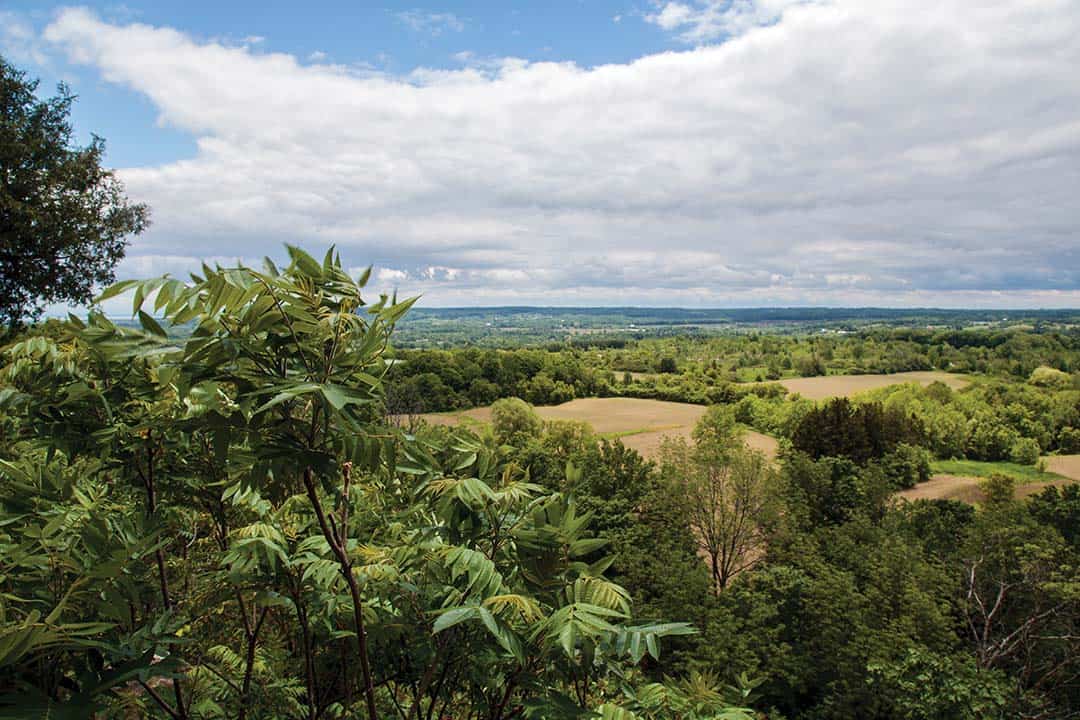The Ontario Greenbelt is the largest greenbelt in the world, featuring two million acres of land that promote climate resilience and support local economies. In 2005, the Greenbelt was created to prevent the further loss of farmland and restrict urban sprawl. Its natural ecosystems act as a carbon sink that prevents temperature rise, and the Greenbelt provides ecosystem services, which save Canadians $3.2 billion per year.
Continued support and protection of the Greenbelt are essential, especially as the consequences of climate change become more evident.
However, last November, Ontario’s provincial government led by Progressive Conservative (PC) premier Doug Ford announced plans to use protected Greenbelt lands for housing development. The plan includes provisions for the construction of 50,000 new homes, a move the government claims is necessary to address Ontario’s housing crisis.
Ford plans to reallocate 9,400 acres to the Greenbelt in exchange for the 7,400 acres designated for housing. The proposed land swap would result in the creation of thousands of homes, along with an expansion of the Greenbelt’s acreage.
In theory, both the environment and government benefit –– however, balancing conservation with construction is not so easily accomplished.
Soon after the government announced its plans, a coalition including environmentalists and local farmers condemned the proposal as both an inadequate effort to solve the crisis and an attack on environmental protection. Ford was criticized for breaking his promise to Ontarians, as a failed attempt at Greenbelt development in 2018 caused him to pledge to uphold environmental protections.
How will altering the Greenbelt affect the environment?
Initial news of housing development on protected land sparked immediate resistance, but deeper investigation reveals a more complex story. The government argues that the Greenbelt plan is favourable because it addresses the housing crisis while expanding protected land.
The government claims this land swap will have a net benefit for the environment. It is true that the reallocation of lands increases the Greenbelt’s acreage by 2,000 acres, but thus far, there are no provisions for environmental protection of this land. Such an expansion can have widespread positive effects, but a central issue remains: balancing the ecological value of newly added land with the destruction of previously safeguarded areas. The government’s lack of transparency paints a blurry picture of the alleged potential for net environmental benefit, undermining their portrayal of the plan as a win-win situation.
If the provincial government follows through with this plan to reallocate the Greenbelt, and thus allows this legislation to pass, then it would set a precedent that establishes the Greenbelt as viable land for development. This decision would threaten future stability of protected lands and undermine conservation efforts.
Removing any part of the protected land destroys the integrity of the Greenbelt system. One of the main concerns about the development plan is its subsequent effect on habitats, resource flows, and animal movements. Conservation is more complex than simply labelling certain areas as “protected.” The Greenbelt was designed with ecosystem functioning and species interaction in mind, and any adjustment to the current Greenbelt disrupts its intentional design and connectivity.
Will Ford’s plans really benefit Ontarians?
Agriculture is also at risk from the land swap, as the removal of farmlands decreases agricultural capacity and limits the food production that supplies Ontarians with produce. 40 per cent of Greenbelt lands are farmlands, and permanent protection of this area is vital to ensure that nearby communities have access to reliable food sources.
The Greenbelt plays a critical role in the health of its region, and unnecessary development puts Ontarians at risk.
The core issue is not the government’s desire to fix the housing crisis. Rather, environmentalists argue that the Greenbelt should not suffer because the government cannot meet its affordable housing promises with land already set aside for development.
The proposed land swap fails to address the entirety of the housing crisis, and there are options that don’t require development on Greenbelt lands –– such as working with the other 14,000 hectares of land that are designated for urban development or beginning construction in existing undeveloped greenfields.
What should be done?
Despite a public consultation that spurred major outcry and disapproval, environmental protections safeguarding 2,995 hectares of Greenbelt land have been removed. The government is moving ahead with its plans, amidst an ethics investigation that is exploring the connection between Ford’s Greenbelt proposal, private developers, and PC donors.
The problems of urban sprawl and climate change continue to wreak havoc on the environment, and the Greenbelt land swap pushes Ontario further toward the edge. For the Ford government to target the Greenbelt is to break its promise to the citizens of Ontario and set a dangerous precedent for the future of protected land.
Balancing conservation with housing development is a seemingly impossible problem. Regardless, the strategy is not to ask for forgiveness after the Greenbelt has been devastated by construction and development –– legislation and governments should err on the side of caution to ensure that no undue harm is imposed.
Conservation and housing development can exist synchronously, but the government’s current plan only prioritizes the latter. Protected land should be permanently protected, and the government should take advantage of available land designated for development.
As the first developers get to work, it’s likely that we will see continued demands to reinstate permanent environmental protection of the Greenbelt and further criticism of Ford’s decision to move forward with a plan wrought with controversy.
Chloe MacVicar is a third-year student at University College, studying environmental studies, political science, and writing and rhetoric. She is a Climate Columnist for The Varsity’s comment section.


